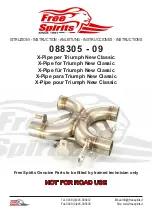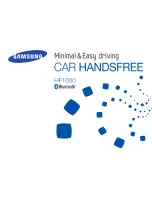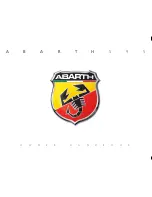
Page 21 of 28
Steps for Determining
C
orrect Load Limit
1.
Locate the statement “The weight of cargo should never exceed 271 kilograms or 600 pounds” on
your vehicle’s placard.
2. That figure equals the available amount of cargo and luggage load capacity.
3. Determine the combined weight of luggage and cargo being loaded on the vehicle. That weight may
not safely exceed the available cargo and luggage load capacity.
4. If the t
railer’s load exceeds the cargo and luggage load capacity, then the trailer will be unsafe
resulting in hazardous effects, such as: t
railer’s tires will not be able to maintain traction properly, and
stopping distance will be increased significantly.
After Each Use
Check for damaged or cracked parts on the trailer after each use, including the tire condition and
pressure. Replace damaged parts before next use.
Wash off the trailer to prevent dirt and road grime from hardening on the components.
Maintenance
Tires
1. Periodic inspection and maintenance of tires and wheels are essential to towing safety, including
spare tires. Proper tire pressure affects vehicle handling and the safety of your tires. You can find the
correct tire pressure for your tow vehicle on the tire information placard.
2. Under inflation reduces the load-carrying capacity of your tow vehicle or trailer, may cause sway and
control problems, and may result in overheating, causing blowouts or other tire failure.
3. Over inflation causes premature tire wear and affects the handling characteristics of the tow vehicle
or trailer.
Wheel Bearings
1. EVERY 2,000 TO 3,000 MILES OF USE
lubricate the Hub Assemblies with a heavy weight bearing
grease, following the instructions in
Hub Bearing Maintenance
.
2. After each hub assembly is reassembled, tighten the castle nut until the wheel starts spinning with
slight resistance. Loosen the castle nut about 1/6 turn from this point.
3. Insert a new cotter pin through the castle nut and the hole in the axle.
4. Bend the cotter pin back, locking it and the nut in place.
Hub Bearing Maintenance
If the following procedure is not adhered to, it may result in wheel locking and tire blowout,
causing an automobile accident or road hazard. Whenever a hub on a new unit requires
assembly (or a hub is disassembled for maintenance), the following procedures MUST be
followed:
Using a suitable solvent, thoroughly clean the bearings, dust hub cap, and the rest of the parts of
the hub assembly of all grease, dirt, metal shavings, or any other foreign object. The parts must
be cleaned even if they are new or appear clean.
Allow all parts to dry completely.
Make sure your hands are clean and bearing packer (not supplied) is also clean.
Place fresh, clean bearing grease in the bearing packer.
With the grease-filled bearing packer in one hand and the bearing in the other, press the bearing
into the grease, forcing the grease inside the slots in the bearing. Continue doing this until every
Содержание 57762
Страница 8: ...Page 8 of 28 ...
Страница 24: ...Page 24 of 28 Parts Diagram ...








































